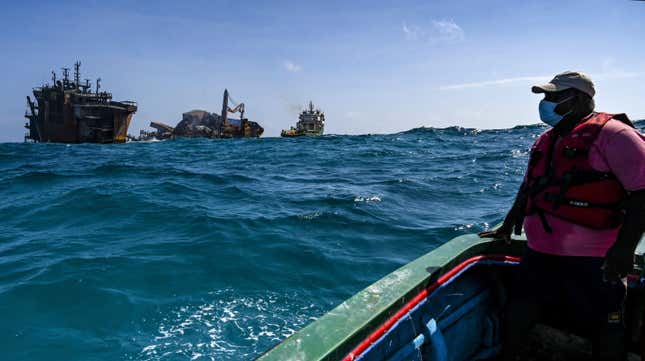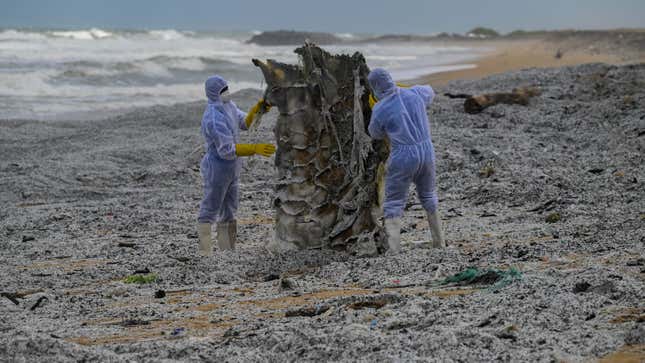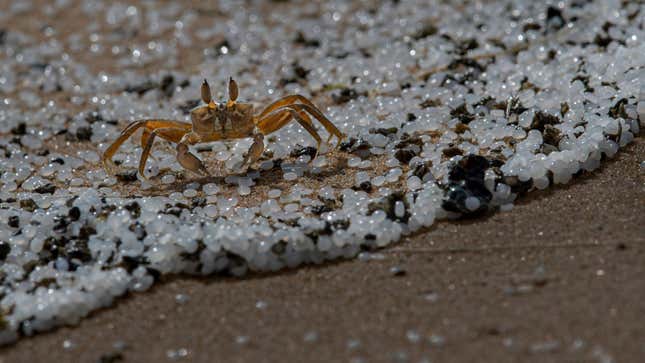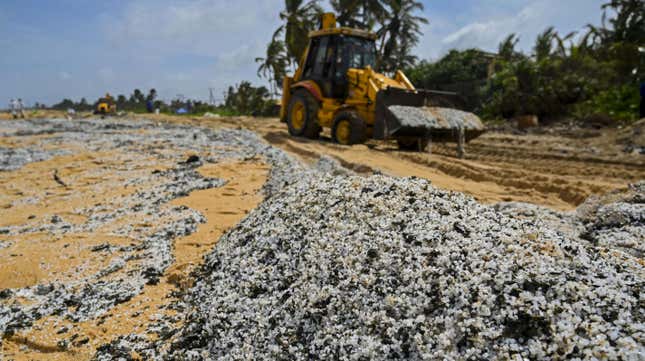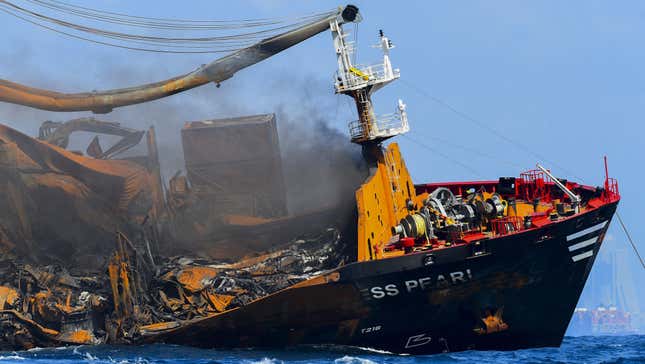
Sri Lanka is facing a rapidly unfolding environmental crisis after a cargo ship that caught on fire last month has sunk, pouring tons of plastic pellets and huge amounts of chemicals into surrounding fishing waters. Government officials worry an oil spill could come next in what’s shaping up to be one of the worst marine disasters in the country’s history.
On Wednesday, authorities paused fishing along 50 miles (81 kilometers) of Sri Lanka’s coast, halting more than 5,600 boats. The government also deployed soldiers to clean up the mess, which began more than two weeks ago after an initial fire released billions of plastic pellets into the sea.
